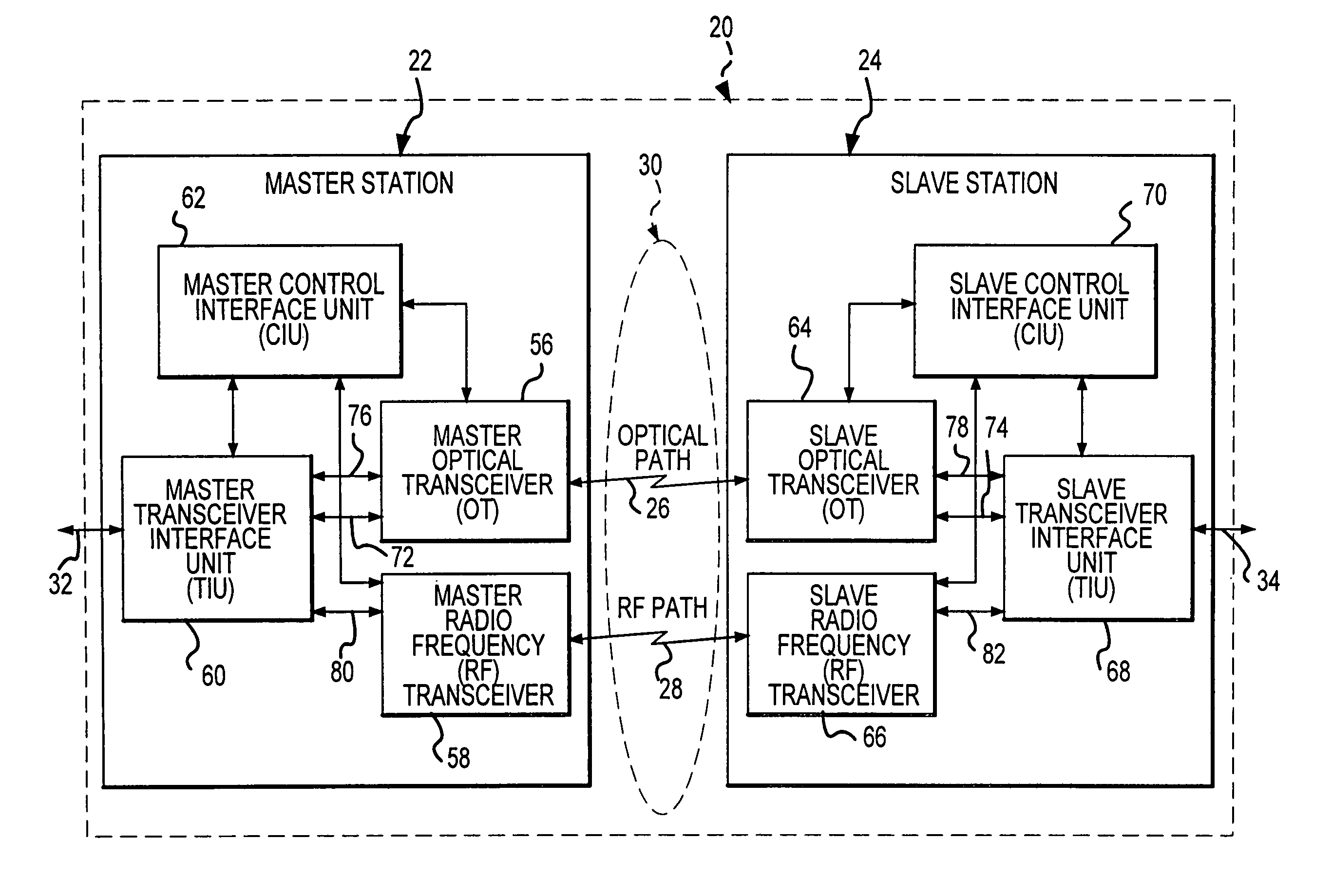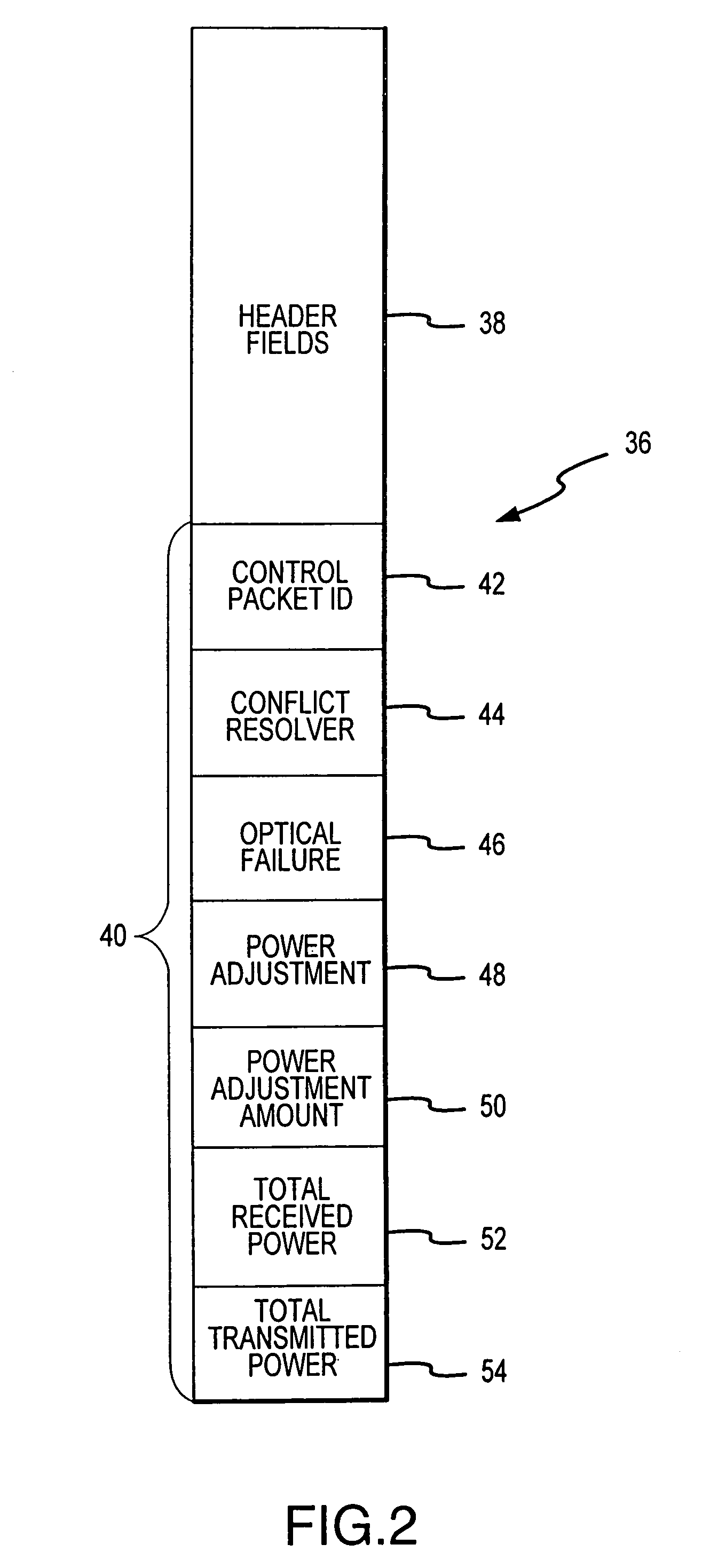Hybrid wireless optical and radio frequency communication link
- Summary
- Abstract
- Description
- Claims
- Application Information
AI Technical Summary
Benefits of technology
Problems solved by technology
Method used
Image
Examples
Embodiment Construction
[0031]A hybrid wireless optical and radio frequency (RF) communication link (the hybrid link) 20 is shown in FIG. 1. The hybrid link 20 combines free-space optical communication technology (preferably laser systems which reach a communication speed of many gigabits per second) with high speed RF technology (preferably microwave) to achieve a wireless terrestrial hybrid laser / microwave communication link for the communication of data between two communication end-points of the hybrid link 20 at stations 22 and 24. The integration of these two wireless communication technologies (optical and RF) in the hybrid link 20 increases the statistical availability or reliability of long-distance (e.g. over 1–2 miles in distance), point-to-point wireless communication.
[0032]The hybrid link 20 preferably generally comprises a master hybrid communication station (master station) 22 and a slave hybrid communication station (slave station) 24. An optical signal, such as a laser beam, is projected i...
PUM
 Login to View More
Login to View More Abstract
Description
Claims
Application Information
 Login to View More
Login to View More - R&D
- Intellectual Property
- Life Sciences
- Materials
- Tech Scout
- Unparalleled Data Quality
- Higher Quality Content
- 60% Fewer Hallucinations
Browse by: Latest US Patents, China's latest patents, Technical Efficacy Thesaurus, Application Domain, Technology Topic, Popular Technical Reports.
© 2025 PatSnap. All rights reserved.Legal|Privacy policy|Modern Slavery Act Transparency Statement|Sitemap|About US| Contact US: help@patsnap.com



